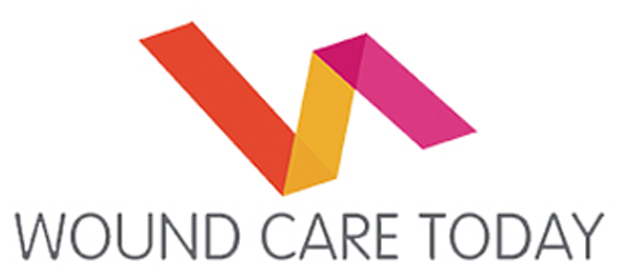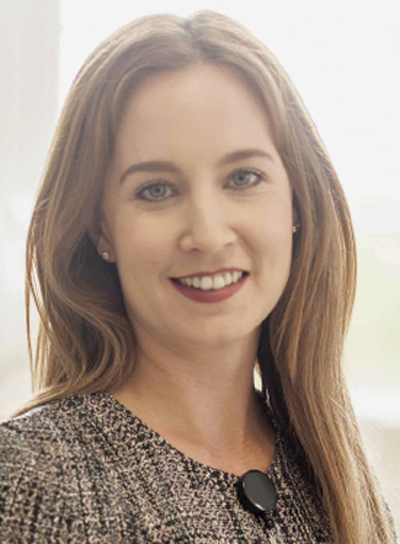References
Alderwick H, Charles A, Jones B, Warburton W (2017) Making the case for quality improvement: lessons for NHS boards and leaders. King’s Fund. Available online: https://www.kingsfund.org.uk/publications/making-case-quality-improvement.
Date last accesssed 9/7/19
Batalden M, Batalden P, Margolis P, et al (2015) Coproduction of healthcare service, Br Medical J 0: 1–9. Available online: http://qualitysafety.bmj.com/content/qhc/early/2015/09/16/bmjqs-2015-004315.full.pdf
Date last accessed 9/7/19
Boyle D, Harris M (2009) The challenge of co-production: How equal partnerships between professionals and the public are crucial to improving public services. Available online: https://www.nesta.org.uk/sites/default/files/the_challenge_of_co-production.pdf
Boyle D, Clark S, Burns S (2006) Joseph Rowntree Foundation. Co-production by people outside paid employment. Date last accessed 9/7/19
Cahn E (2000) No more throw away people: the co-production imperative. Essential Books, Washington
Cameron, A. (2018) The Edge: Co-production – radical roots, radical results. Date last accessed 9/7/19
Camillus, J. C. (2008) Strategy as a wicked problem, Harvard Business Review. Available from: https://hbr.org/2008/05/strategy-as-a-wicked-problem
Co-Production Network for Wales. (2018) Our purpose. Available from: https://copronet.wales/ Date last accessed 9/7/19
Department of Health (2013) NHS Outcomes framework 2014/15. Available from: https://www.gov.uk/government/uploads/system/uploads/attachment_data/file/256456/NHS_outcomes.pdf. Date last accessed 9/7/19
European Pressure Ulcer Advisory Panel (2014) Prevention and treatment of pressure ulcers: a quick reference guide. Available from: https://npuap.org/page/2014Guidelines Date last accessed 9/7/19
Health Foundation (2015) What’s getting in the way? Barriers to improvement in the NHS. Available from: https://www.health.org.uk/publications/what’s-getting-in-the-way-barriers-to-improvement-in-the-nhs Date last accessed 9/7/19
Health Foundation (2013) Quality improvement made simple What everyone should know about health care quality improvement. Available from: https://www.health.org.uk/sites/health/files/QualityImprovementMadeSimple.pdf. Date last accessed 9/7/19
Healthcare Improvement Scotland (2011) Patient safety: SSKIN care bundle. Available from: http://www.healthcareimprovementscotland.org/our_work/patient_safety/tissue_viability/sskin_care_bundle.aspx Date last accessed 9/7/19
Hope, M. (2014) Help nurses care – A view from the front line on the ‘Stop the Pressure’ campaign. Available from: https://www.england.nhs.uk/blog/stop-the-pressure/. Date last accessed 9/7/19
Loeffler, E., Power, G., Bovaird, T. and Hine-Hughes, F. (2013) Co-Production of Health and Wellbeing in Scotland. Governance International. Date last accessed 9/7/19
Malby B (2016) ‘Them and Us’ - Why coproduction and patient leaders will change the NHS. Available from: https://beckymalby.wordpress.com/2016/09/27/them-and-us1-why-coproduction-and-patient-leaders-will-change-the-nhs/. Date last accessed 9/7/19
Malby B (2015) Voice, Choice and Co-production. Available from: https://beckymalby.wordpress.com/2015/11/08/17/. Date last accessed 9/7/19
National Co-production Network (2018) What is co-production? Available from: https://www.thinklocalactpersonal.org.uk/co-production-in-commissioning-tool/co-production/In-more-detail/what-is-co-production/. Date last accessed 9/7/19
NHS England (2019) Long Term Plan. Available from: https://www.longtermplan.nhs.uk/. Date last accessed 9/7/19
NHS England (2017) The NHS in 2017: Next steps on the NHS five year forward view.
NHS England (2014) Five Year Forward View. Available from: https://www.england.nhs.uk/wp-content/uploads/2014/10/5yfv-web.pdf Date last accessed 9/7/19
NHS England Safety Thermometer (2014) Patient Harms and Harm Free Care. December 2012-December 2013, official statistics. Available from: https://digital.nhs.uk/data-and-information/publications/statistical/nhs-safety-thermometer-report/nhs-safety-thermometer-report-december-2012-to-december-2013 Date last accessed 9/7/19
NHS Improvement (2018) Pressure ulcer core curriculum. Available from: https://improvement.nhs.uk/resources/pressure-ulcer-core-curriculum/ Date last accessed 9/7/19
NHS Wales (2013) Pressure Ulcer Prevention - SKIN Bundle. Available from: http://www.wales.nhs.uk/sitesplus/863/page/65480 Date last accessed 9/7/19
Ostrom E (1996) Crossing the great divide: co-production, synergy and development, World Development, 24 (6), pp. 1073-1087.
Realpe A, Wallace LM (2010) What is Co-production? The Health Foundation. Available from: https://personcentredcare.health.org.uk/sites/default/files/resources/what_is_co-production.pdf Date last accessed 9/7/19
Richards M (2016) Care Quality Commission: State of care in acute NHS hospitals. Available from: http://www.cqc.org.uk/sites/default/files/20170302b_stateofhospitals_web.pdf Date last accessed 9/7/1.9
Sankaran BM, Chakraborty S, Patil VM, Raghavan SN, Thomas S, Sen S (2015) Burden and outcomes of pressure ulcers in cancer patients receiving the Kerala model of home based palliative care in India: Results from a prospective observational study. Indian Journal of Palliative Care 21(2): 152–7
The Social Care Institute for Excellence (2015) Co-production in social care: what it is and how to do it – at a glance. Available from: https://www.scie.org.uk/publications/guides/guide51/at-a-glance/ Date last accessed 9/7/19
Whitlock J, Rowlands S, Ellis G, Evans A (2011) Using the SKIN Bundle to prevent pressure ulcers. Nursing Times 107(35): 20–23
Date last accesssed 9/7/19
Batalden M, Batalden P, Margolis P, et al (2015) Coproduction of healthcare service, Br Medical J 0: 1–9. Available online: http://qualitysafety.bmj.com/content/qhc/early/2015/09/16/bmjqs-2015-004315.full.pdf
Date last accessed 9/7/19
Boyle D, Harris M (2009) The challenge of co-production: How equal partnerships between professionals and the public are crucial to improving public services. Available online: https://www.nesta.org.uk/sites/default/files/the_challenge_of_co-production.pdf
Boyle D, Clark S, Burns S (2006) Joseph Rowntree Foundation. Co-production by people outside paid employment. Date last accessed 9/7/19
Cahn E (2000) No more throw away people: the co-production imperative. Essential Books, Washington
Cameron, A. (2018) The Edge: Co-production – radical roots, radical results. Date last accessed 9/7/19
Camillus, J. C. (2008) Strategy as a wicked problem, Harvard Business Review. Available from: https://hbr.org/2008/05/strategy-as-a-wicked-problem
Co-Production Network for Wales. (2018) Our purpose. Available from: https://copronet.wales/ Date last accessed 9/7/19
Department of Health (2013) NHS Outcomes framework 2014/15. Available from: https://www.gov.uk/government/uploads/system/uploads/attachment_data/file/256456/NHS_outcomes.pdf. Date last accessed 9/7/19
European Pressure Ulcer Advisory Panel (2014) Prevention and treatment of pressure ulcers: a quick reference guide. Available from: https://npuap.org/page/2014Guidelines Date last accessed 9/7/19
Health Foundation (2015) What’s getting in the way? Barriers to improvement in the NHS. Available from: https://www.health.org.uk/publications/what’s-getting-in-the-way-barriers-to-improvement-in-the-nhs Date last accessed 9/7/19
Health Foundation (2013) Quality improvement made simple What everyone should know about health care quality improvement. Available from: https://www.health.org.uk/sites/health/files/QualityImprovementMadeSimple.pdf. Date last accessed 9/7/19
Healthcare Improvement Scotland (2011) Patient safety: SSKIN care bundle. Available from: http://www.healthcareimprovementscotland.org/our_work/patient_safety/tissue_viability/sskin_care_bundle.aspx Date last accessed 9/7/19
Hope, M. (2014) Help nurses care – A view from the front line on the ‘Stop the Pressure’ campaign. Available from: https://www.england.nhs.uk/blog/stop-the-pressure/. Date last accessed 9/7/19
Loeffler, E., Power, G., Bovaird, T. and Hine-Hughes, F. (2013) Co-Production of Health and Wellbeing in Scotland. Governance International. Date last accessed 9/7/19
Malby B (2016) ‘Them and Us’ - Why coproduction and patient leaders will change the NHS. Available from: https://beckymalby.wordpress.com/2016/09/27/them-and-us1-why-coproduction-and-patient-leaders-will-change-the-nhs/. Date last accessed 9/7/19
Malby B (2015) Voice, Choice and Co-production. Available from: https://beckymalby.wordpress.com/2015/11/08/17/. Date last accessed 9/7/19
National Co-production Network (2018) What is co-production? Available from: https://www.thinklocalactpersonal.org.uk/co-production-in-commissioning-tool/co-production/In-more-detail/what-is-co-production/. Date last accessed 9/7/19
NHS England (2019) Long Term Plan. Available from: https://www.longtermplan.nhs.uk/. Date last accessed 9/7/19
NHS England (2017) The NHS in 2017: Next steps on the NHS five year forward view.
NHS England (2014) Five Year Forward View. Available from: https://www.england.nhs.uk/wp-content/uploads/2014/10/5yfv-web.pdf Date last accessed 9/7/19
NHS England Safety Thermometer (2014) Patient Harms and Harm Free Care. December 2012-December 2013, official statistics. Available from: https://digital.nhs.uk/data-and-information/publications/statistical/nhs-safety-thermometer-report/nhs-safety-thermometer-report-december-2012-to-december-2013 Date last accessed 9/7/19
NHS Improvement (2018) Pressure ulcer core curriculum. Available from: https://improvement.nhs.uk/resources/pressure-ulcer-core-curriculum/ Date last accessed 9/7/19
NHS Wales (2013) Pressure Ulcer Prevention - SKIN Bundle. Available from: http://www.wales.nhs.uk/sitesplus/863/page/65480 Date last accessed 9/7/19
Ostrom E (1996) Crossing the great divide: co-production, synergy and development, World Development, 24 (6), pp. 1073-1087.
Realpe A, Wallace LM (2010) What is Co-production? The Health Foundation. Available from: https://personcentredcare.health.org.uk/sites/default/files/resources/what_is_co-production.pdf Date last accessed 9/7/19
Richards M (2016) Care Quality Commission: State of care in acute NHS hospitals. Available from: http://www.cqc.org.uk/sites/default/files/20170302b_stateofhospitals_web.pdf Date last accessed 9/7/1.9
Sankaran BM, Chakraborty S, Patil VM, Raghavan SN, Thomas S, Sen S (2015) Burden and outcomes of pressure ulcers in cancer patients receiving the Kerala model of home based palliative care in India: Results from a prospective observational study. Indian Journal of Palliative Care 21(2): 152–7
The Social Care Institute for Excellence (2015) Co-production in social care: what it is and how to do it – at a glance. Available from: https://www.scie.org.uk/publications/guides/guide51/at-a-glance/ Date last accessed 9/7/19
Whitlock J, Rowlands S, Ellis G, Evans A (2011) Using the SKIN Bundle to prevent pressure ulcers. Nursing Times 107(35): 20–23



